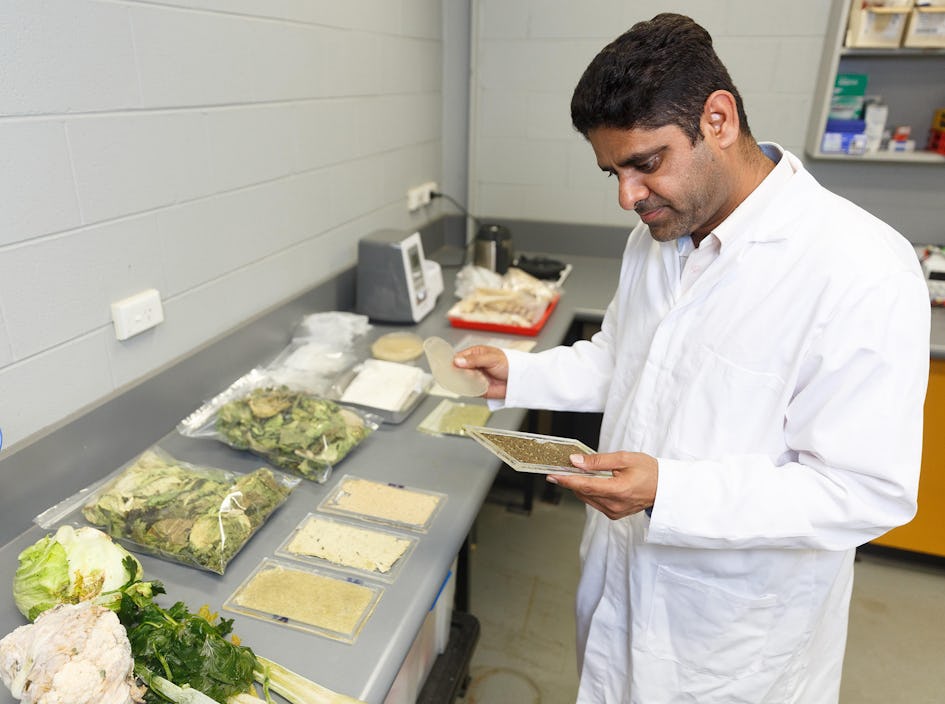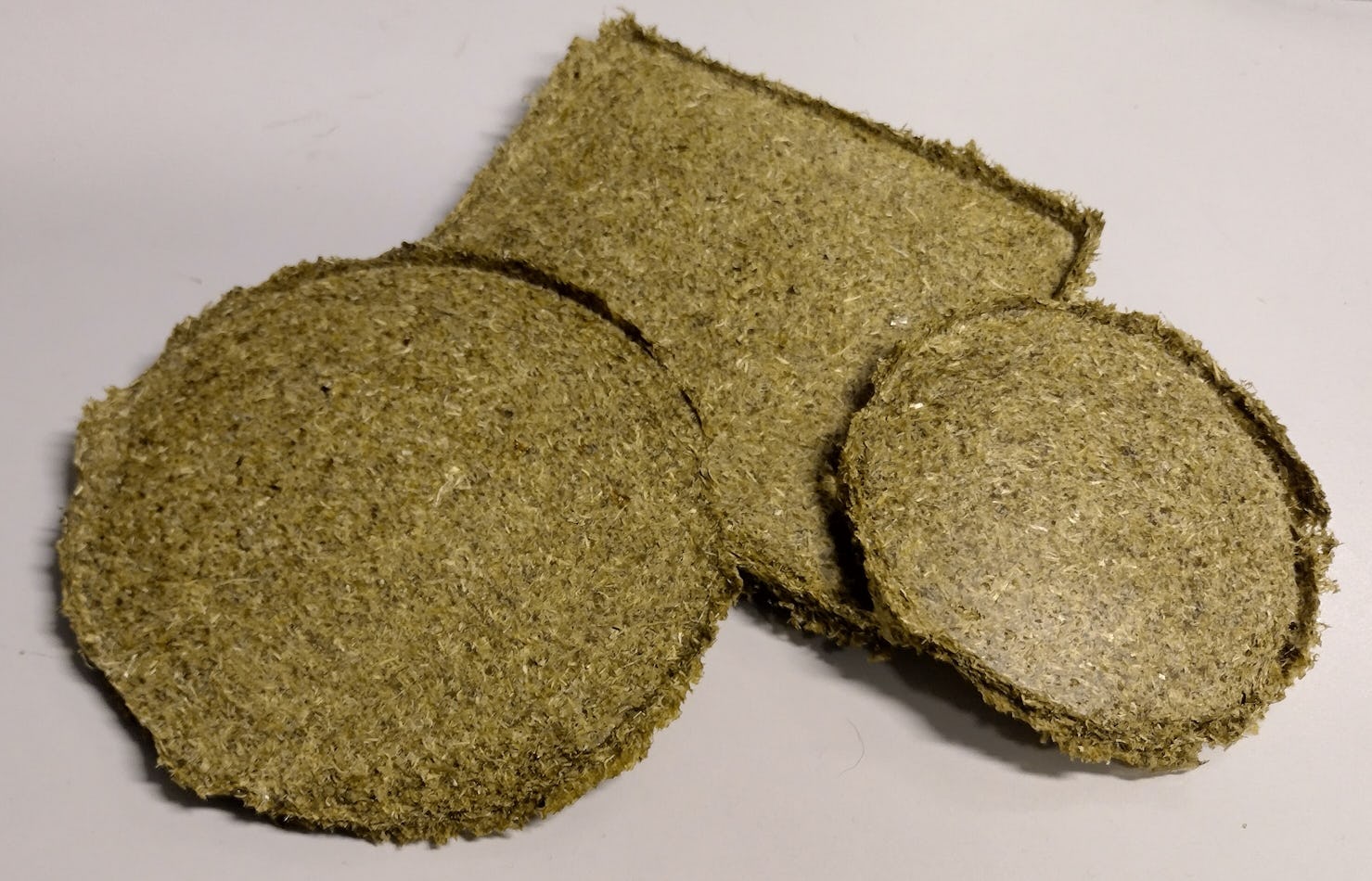Researchers from Victoria University’s Institute for Sustainable Industries & Liveable Cities have been investigating the use of agricultural waste in the creation of more easily compostable packaging. With support from the Victorian Government, Professor Vincent Rouillard with researchers Dr Matthew Lamb and Dr Marlene Cran, have created a flexible film made from pea starch left over after food processing. To make the film protein derived from yellow peas is mixed with additives and run through a thermal process. The result is a material that looks just like plastic.

Researchers with examples of sustainable food packaging made from vegetables
The next stage of development is to improve the water resistance of the film and create a truly closed loop solution.
“In future there could be peas sold in a bag made from the leftover starch sourced from the vegetables inside the bag,” said Cran. “That’s the dream.”
The team have also been working with Velisha Farms to convert waste vegetables like celery, zucchini and lettuce into cushioning and boards for food product packaging. The researchers have identified the strengths of each vegetable to develop a corresponding solution. Celery’s high cellulose content has led to the creation of trays (pictured) while zucchini’s high fibre has resulted in a flexible material suitable as a tray insert and produce separator. The partially dried laminated leaves of iceberg lettuce are favoured as cushioning material and boards.

Samples of different shaped packaging board made from celery
In developing these new packaging solutions, the whole production process is reviewed to ensure one problem is not being replaced with another.
“We need to look at packaging solutions that have a feasible plan for their end-stage of the lifecycle,” said Rouillard.
Toxicity and levels of carbon released during decomposition are regularly tested for prototype materials to inform the environmental impacts and benefits of new materials.
In order for Australia to reach its bold national packaging target of ‘100% reusable, recyclable or compostable packaging by 2025’, investment into circular solutions like these are crucial. So too is investment into facilities to enable local testing for new bio packaging to speed up viability testing of prototypes and shorten the time to market. At present, local industry-grade testing facilities are limited, making basic packaging testing and verification expensive and time consuming.
With more investment in the industry, Cran’s dream could become a peafect reality.
Planet Ark does not take responsibility for the accuracy of the original information and encourages readers to check the references before using this information for their own purposes.